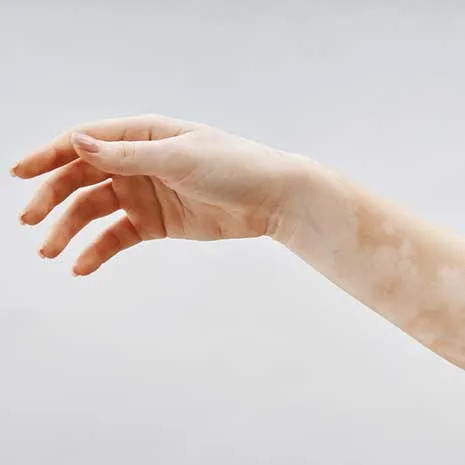What Are the Most Up-to-Date Treatments for Vitiligo?

What Are the Most Up-to-Date Treatments for Vitiligo?
- 1 August 2025
- 224

Modern Approaches to Treating Vitiligo
Vitiligo is a chronic condition characterized by depigmented white patches on the skin, caused by the loss of melanocytes. Although its exact cause remains unknown, it is believed to involve a combination of autoimmune mechanisms, genetic predisposition, and environmental triggers. While there is no definitive cure yet, recent medical advancements offer promising strategies to manage and reverse depigmentation.
Phototherapy: Still a Gold Standard in Clinical Practice
Narrowband UVB (NB-UVB) Therapy
Among the most effective treatments, NB-UVB phototherapy uses targeted ultraviolet B light to stimulate melanocyte activity. Typically administered 2–3 times per week, it has shown excellent results on the face, trunk, and limbs.
Key Benefits:
- No systemic side effects
- Safe during pregnancy
- Stimulates repigmentation with consistent use
Topical Agents: Advancements in Dermatologic Formulations
Topical Corticosteroids and Calcineurin Inhibitors
Topical corticosteroids remain a frontline option, especially in early or limited vitiligo. However, newer agents like tacrolimus and pimecrolimus (calcineurin inhibitors) are preferred for sensitive areas such as the face due to lower risk of skin thinning.
Next-Generation Delivery Systems
Recent developments include nano- and liposomal drug delivery systems that enhance skin penetration and efficacy. These technologies improve local action while reducing systemic absorption and side effects.
Stem Cell and Regenerative Therapies
Stem cell research is breaking new ground in dermatology. One approach involves melanocyte stem cell transplantation, used primarily in patients with stable vitiligo.
How It Works:
- Melanocytes are harvested from healthy skin
- Cultured in vitro and re-applied to depigmented areas via micrografting
- Often combined with laser stimulation for enhanced results
Preliminary studies show repigmentation rates of up to 80% in selected patients, though this technique is still largely experimental.
Laser Therapy: The Precision of 308nm Excimer Laser
Excimer laser therapy at 308 nm wavelength is designed for targeted repigmentation. Especially effective in localized vitiligo, it offers an alternative or adjunct to NB-UVB treatment.
Advantages:
- Targets only affected areas
- Minimal damage to surrounding skin
- Often achieves faster results
Oral JAK Inhibitors: A Breakthrough in Systemic Therapy
Janus kinase (JAK) inhibitors such as tofacitinib and ruxolitinib are under investigation for vitiligo. These immunomodulators interrupt the inflammatory pathways that damage melanocytes.
Topical Ruxolitinib (Opzelura): FDA-Approved
In 2022, the FDA approved topical ruxolitinib cream (brand name: Opzelura) for nonsegmental vitiligo in patients aged 12 and above. Clinical trials demonstrated significant facial repigmentation in over 50% of patients using the product for 24 weeks.
Camouflage and Supportive Therapies
When full repigmentation isn’t achievable, psychosocial support and cosmetic techniques can greatly improve quality of life.
These include:
- Medical camouflage cosmetics
- Sunless tanning lotions
- Broad-spectrum sunscreens
- Psychotherapy and support groups
Since vitiligo is a visible disorder, emotional and psychological care is crucial alongside dermatological management.
Tailored Treatment Plans and Long-Term Monitoring
There is no universal protocol for vitiligo. The ideal approach depends on various individual factors such as age, extent of depigmentation, disease activity, and patient preference. Dermatologists typically create personalized plans involving a combination of therapies for optimal results.
Frequently Asked Questions
Currently, there is no permanent cure for vitiligo, but several treatments can effectively restore skin pigmentation and halt progression.
NB-UVB phototherapy remains the most clinically validated method, while topical JAK inhibitors are emerging as a strong complementary option.
Yes, the 308 nm excimer laser is particularly helpful in treating small, localized areas and often provides faster results than traditional phototherapy.
No. Stem cell transplantation is currently recommended only for stable cases where the condition hasn’t progressed for at least 6–12 months.
Controlled exposure may help, but unprotected sunbathing can lead to skin damage. Sunscreen is essential for all vitiligo patients.
